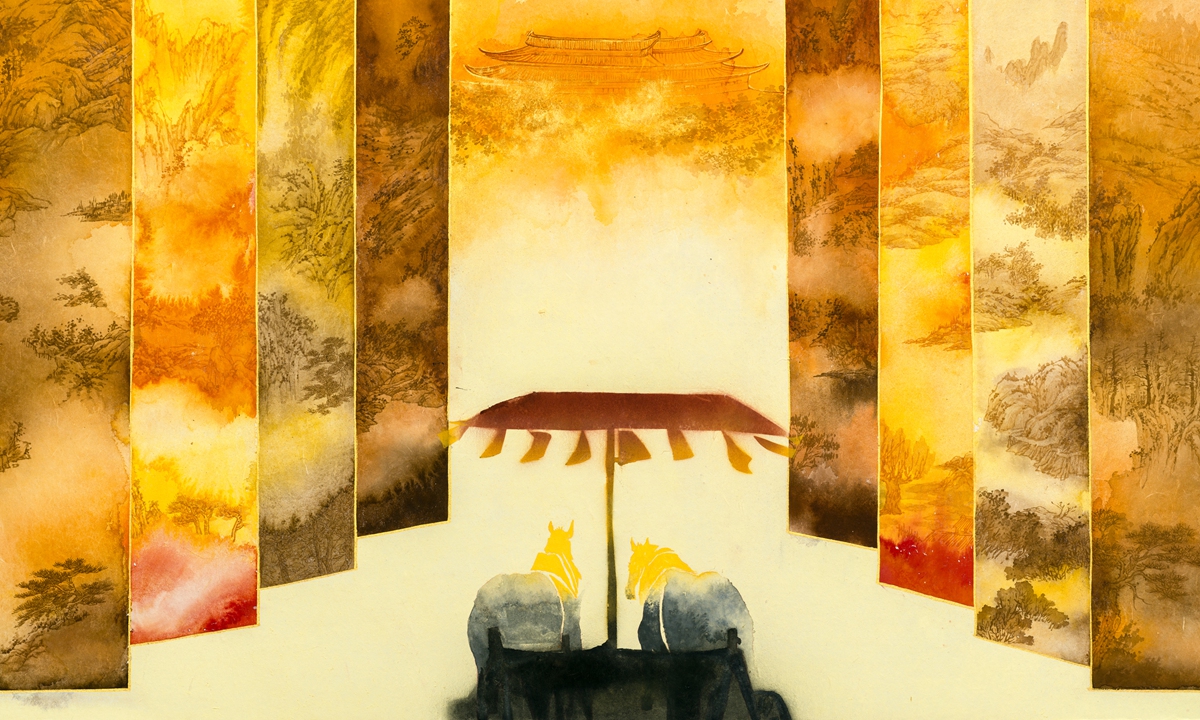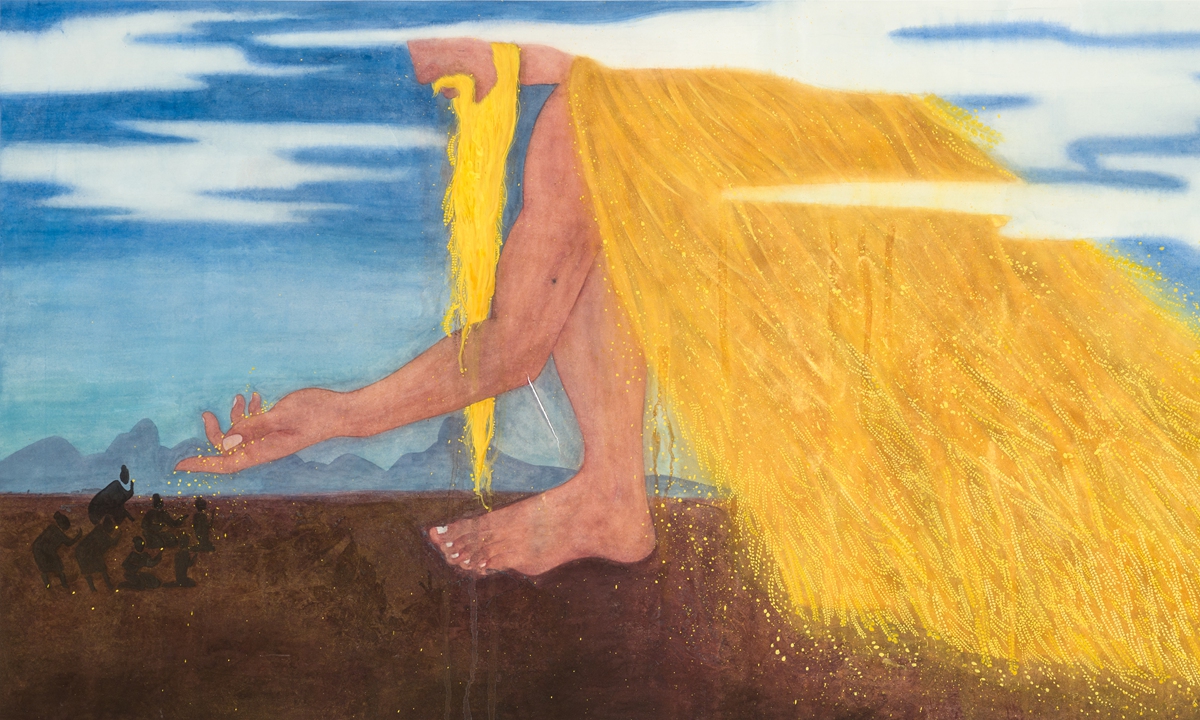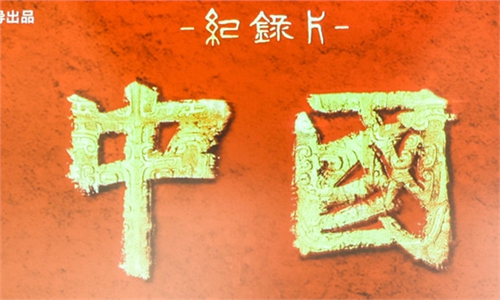ARTS / CULTURE & LEISURE
Documentary series incorporates hand paintings, computer graphics to present China’s prehistory
Innovative fusion

A screenshot of the documentary series China Photo: Courtesy of Mango TV
From the eclectic myths surrounding Pangu - the first man, who is said to have separated heaven and earth, setting the sun, moon, stars, and planets in place, and dividing the four seas aside, or even those of the birth of China's farming culture and jade culture - what you can see on the screens are the "moveable" paintings that present China's ancient history.A newly released documentary China offers audiences a distinct viewing experience, as they embark on a journey into the ancient world with a charismatic narrator as their guide.
Li Dongshen, chief director of the documentary, said he hopes the third season of the documentary China will be appreciated by audiences as a bolder attempt at showcasing history and its links to contemporary society.
"The audience will 'enter' this work like an exhibition. In my eyes, it is more like a contemporary art exhibition featuring paintings," Li told the Global Times.
Innovative expression
The 12-episode season, which debuted on Hunan TV and its online video platform Mango TV, traces back to China's prehistoric period, drawing from myths and legends to archaeological historical materials, and from the starry prehistoric society to the Xia, Shang and Zhou dynasties.
A special focus is placed on the creation and development of rituals as an inroad to better understand Chinese civilization.
The director admitted to considering many different ways to best communicate the vision of the documentary series, from following archaeological clues from the Paleolithic Period to the Neolithic Period, to conducting different analyses of the Liangzhu Civilization and Sanxingdui ruins.
In the end, the director settled on an analytical approach from the audience prompting them to think: Who are we, where do we come from, where did the world we live in come from, how did everything created by humans today begin, how did China become China, and as Chinese people, what makes us who we are?
In Li's words, answers to questions about how the Chinese people got to where they are today and where Chinese thought and culture came from have always been the core pursuit of documentaries about China.
This is also why the documentary, after showing how the ideological system represented by "rituals" affects China in the documentary series' two previous seasons, the format has reverted to its origins in the third season, tracing back to the source of myths and legends and how they have shaped the Chinese conscience, how farming civilization became the foundation of the Chinese civilization, and how the civilization of rituals and music was finally established in the changes in divination and sacrifice methods.
"It's a stair-step pursuit," Li said.

A screenshot of the documentary series China Photo: Courtesy of Mango TV
Chinese aestheticUnder the penmanship of a group of young artists, mythology, animation, and documentary, three unrelated keywords are made complementary.
In order to pursue the brilliance in mythology, young painters have incorporated ceramic art methods such as heavy coloring, blowing color, foil application and burning, and even glaze spraying, so that the final picture presents an unmistakably aesthetic Chinese visual effect.
All kinds of familiar yet distant stories, including how Nüwa created humans, how Shennong tasted hundreds of herbs, and how Pangu separated heaven and earth, have been incorporated into the Chinese aesthetic.
A total of 183 outstanding young painters, spent nearly 200 days and more than 3,000 hours creating these paintings, and used computer graphics to animate nearly a thousand art paintings.
Shan Haoxiang, a participating painter, told the Global Times that cooperation with galleries was just a business in the past, but "when we cooperate for a documentary about China, we are creating a great work together."
"This work is really great. From the perspective of traditional Chinese paintings, we are creating a new concept of traditional Chinese painting. From the perspective of documentary making, we are creating a new direction for film and television," he said with excitement.
According to Shan and other team members, Chinese painting skills have been widely used for these paintings.
The first episode depicts the creation of the body, eyes, and other local features of the ancient gods to express the human imagination of gods.
"Everyone has their own imagination and understanding of gods. Therefore, many of our gods in the first episode do not have a specific face, which leaves room for imagination," he said.

The shapes of jade in this period laid the foundation of Chinese jade culture, including its spiritual connotation, social attributes, people's understanding of the nature of heaven and earth, and the basis of belief forms.
The animation technique team used an unconventional computer graphics production process. It didn't follow the process from text script to storyboard and then to animation. Instead, it started with the completed paintings.
"The key point is to grasp the rhythm of time. Sometimes it is long, while sometimes it is short. The key lies in artistic conception. We are not making character cartoons, but narrating history. So in many cases, we use flowing pictures to show an emotional conception," animation technical director Pang Zizhou told the Global Times.


